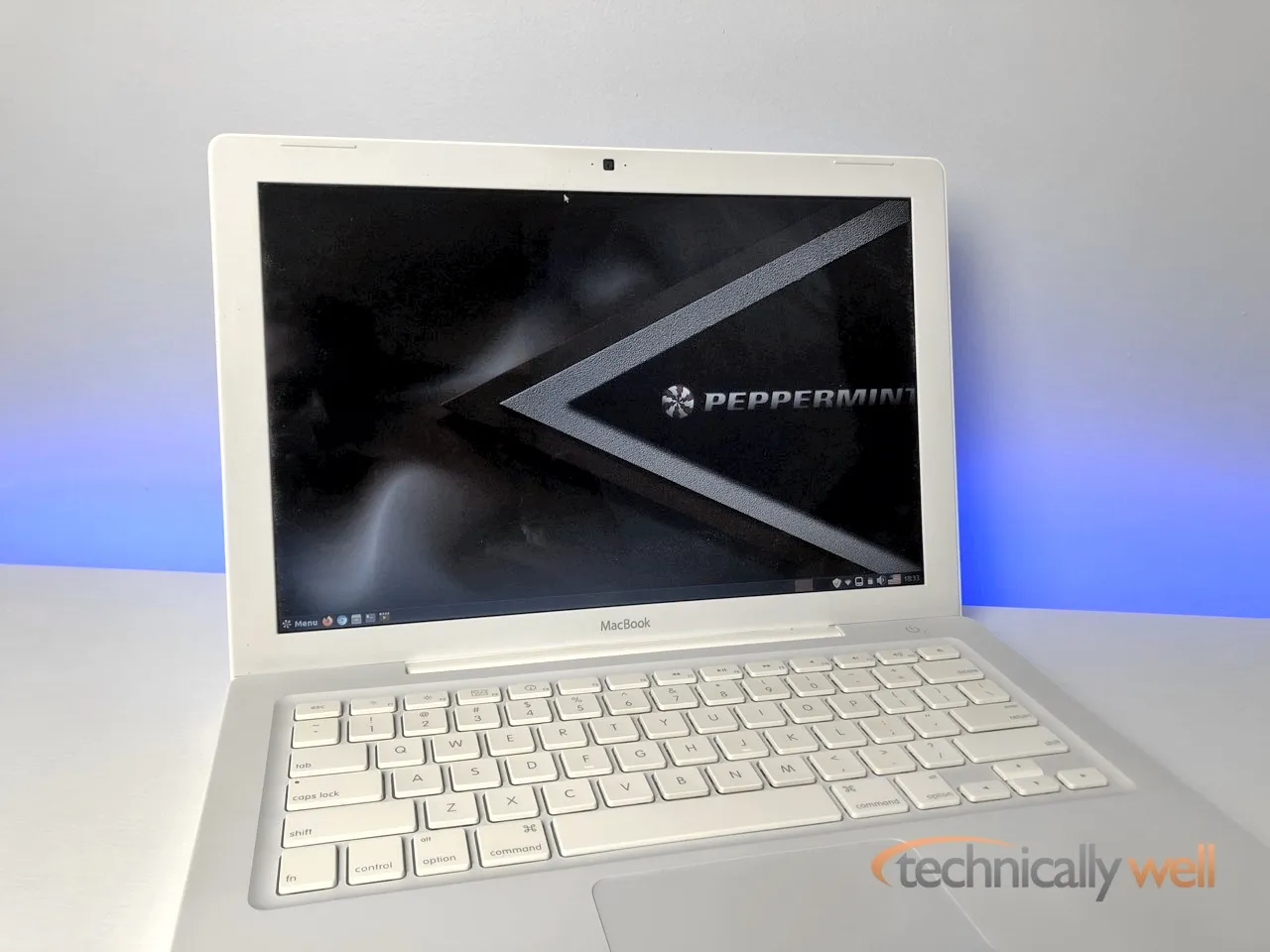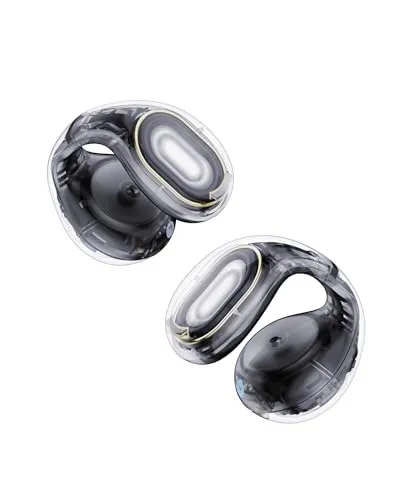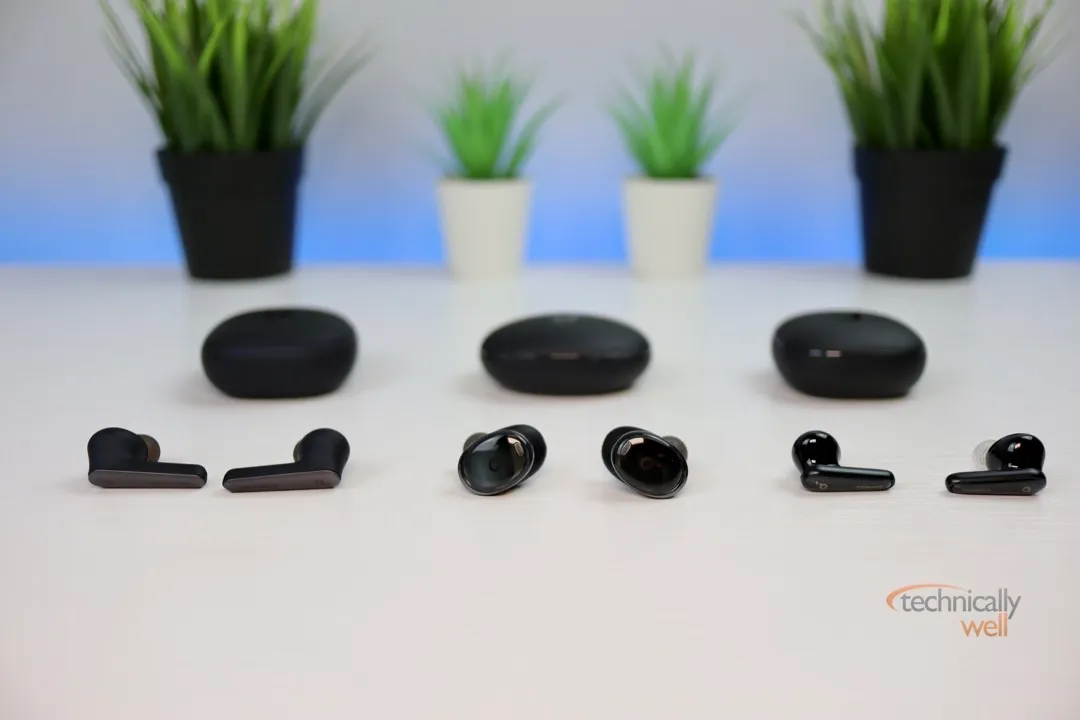
Best Linux Distributions for Older MacBooks
As an Amazon Associate, we earn from qualifying purchases at no cost to you.
How to Revive Your Old MacBook with Linux
If you have an old MacBook that is slow and sluggish, you might want to consider installing Linux on it. Linux is a free and open-source operating system that can run on almost any hardware, including older MacBooks. Check out my detailed installation guide where I installed a Ubuntu 18.04 distro on my 2008 MacBook.
MacBooks are great devices, but they are not immune to aging. As with any operating system, over time, your MacBook might become slower, less responsive, and more prone to crashes. You might also find that the latest macOS updates are not compatible with your device, or that some of the apps you use are no longer supported. Apple usually provides security updates for the latest 3 releases of macOS, but this rule isn’t set in stone and some versions of macOS may be retired earlier.
If you are in this situation, you have a few options. You can either buy a new MacBook, which can be quite expensive, or you can try to upgrade your existing one, which can be tricky and risky. Or, you can do something different: you can install Linux on your old MacBook.
Linux is a free and open-source operating system that can run on almost any hardware, including older MacBooks. Linux offers many advantages, such as:
-
More customization and control over your system
-
Performance and stability
-
Security and privacy
-
A huge variety of software and applications
-
A vibrant and helpful community of users and developers
Of course, Linux is not perfect. It can have some compatibility issues with certain hardware components, such as Wi-Fi cards or touchpads. It can also have a steeper learning curve than macOS, especially if you are not familiar with the command line. And it might not have all the features or apps that you are used to on macOS.
But if you are willing to give Linux a try, you might be surprised by how much it can improve your old MacBook’s performance and functionality. In this article, we will show you some of the best Linux distributions for older MacBooks and how to install them.
What is a Linux distribution?
A Linux distribution, or distro for short, is a collection of software that runs on top of the Linux kernel. The kernel is the core component of the operating system that manages the communication between the hardware and the software. A distro usually includes:
-
A desktop environment: This is the graphical user interface that you see on your screen. It provides the basic elements such as menus, icons, windows, panels, etc.
-
A package manager: This is a tool that allows you to install, update, and remove software from your system.
-
A set of applications: These are the programs that you use for various tasks, such as browsing the web, editing documents, playing games, etc.
There are hundreds of Linux distros available, each with its own features, design, and philosophy. Some distros are designed for specific purposes or audiences, such as gaming, security, education, etc. Some distros are based on other distros, meaning that they share some of their components and software.
Choosing a Linux distro can be overwhelming, especially if you are new to Linux. To help you narrow down your options, we will focus on some of the best Linux distros for older MacBooks in the next section.
Best Linux distros for older MacBooks
When choosing a Linux distro for your old MacBook, there are a few factors that you should consider:
-
Compatibility: You want a distro that works well with your MacBook’s hardware and does not require too much tweaking or troubleshooting.
-
Performance: You want a distro that runs smoothly and does not consume too much of your MacBook’s resources.
-
Usability: You want a distro that is easy to use and has a familiar and intuitive interface.
-
Support: You want a distro that has regular updates and a large and active community of users and developers.
Based on these criteria, here are some of the best Linux distros for older MacBooks:
Ubuntu
Ubuntu is one of the most popular and widely used Linux distros in the world. It is based on Debian, another well-known and stable distro. Ubuntu is known for its user-friendliness, simplicity, and reliability. It has a modern and elegant desktop environment called GNOME, which resembles macOS in some aspects. It also has a large and diverse software repository, and a long-term support (LTS) version that receives security updates for five years.
Ubuntu is compatible with most MacBooks, although you might need to install some additional drivers or firmware for some components, such as Wi-Fi or Bluetooth. Ubuntu also has good performance on older MacBooks, as long as you have at least 2 GB of RAM and 25 GB of disk space.
There are also “lighter” versions of Ubuntu available if you find that the main Ubuntu distro runs too sluggishly on your MacBook. Xubuntu is a variant of Ubuntu that uses the Xfce desktop environment (instead of GNOME which is used in the main Ubuntu distribution). The Xfce desktop is lightweight and requires less system resources. Lubuntu is another distribution based on Ubuntu that uses the LXQt, which is also a lightweight and resource-friendly desktop environment.
To install Ubuntu (or really any Linux distribution) on your old MacBook, you need to download the ISO image file from the official website, and create a bootable USB drive using a tool like Etcher or Rufus. Then, you need to boot from the USB drive by holding down the Option key while turning on your MacBook, and follow the installation instructions on the screen.
Linux Mint
Linux Mint is another popular and user-friendly Linux distro that is based on Ubuntu.
It has a more traditional and conservative desktop environment called Cinnamon, which resembles Windows in some aspects. It also has a more curated and streamlined software selection, and a custom update manager that lets you choose which updates to install.
Linux Mint is compatible with most MacBooks, and it usually does not require any additional drivers or firmware. Linux Mint also has good performance on older MacBooks, as long as you have at least 1 GB of RAM and 15 GB of disk space.
Elementary OS
Elementary OS is a beautiful and elegant Linux distro that is inspired by macOS. It has a minimalist and sleek desktop environment called Pantheon, which features a dock, a top panel, and an app launcher. It also has a curated and refined software selection, and a pay-what-you-want model for downloading apps from its own app store.
Elementary OS is compatible with most MacBooks, although you might need to install some additional drivers or firmware for some components, such as Wi-Fi or Bluetooth. Elementary OS also has good performance on older MacBooks, as long as you have at least 4 GB of RAM and 32 GB of disk space.
Ubuntu Budgie
Ubuntu Budgie is another official variant of the Ubuntu operating system that integrates the Budgie desktop environment with Ubuntu, which provides a familiar macOS-like dock. Ubuntu Budgie is designed to be lightweight and efficient while providing a modern, sleek, and user-friendly experience. It comes with some features that will make macOS users feel right at home, such as hot corners and Expose.
It is recommended to have 4GB of RAM and 60 GB of free disk space to install Ubuntu Budgie. As with the other Linux distributions, you may need to install some additional drivers for components such as Wi-Fi and Bluetooth.
Reasons not to run Linux on a MacBook
Although Linux is a great and stable operating system, there are some reasons that users familiar with macOS might not want to use Linux:
- Linux doesn’t have an integration for iMessages and text messages like macOS.
- Mac applications won’t run on Linux, although it is worth checking with the developer as they may offer a Linux version of their software. You could also search for an Open Source alternative to your favorite Mac applications.
- There is no iCloud integration on Linux, so no photo syncing or iCloud Drive access. However, you can access many iCloud services through your browser at iCloud.com.
- There is also no Find My function in Linux, although the Prey project is one possible alternative.
- You won’t be able to call up Apple’s support team if you have a question about Linux. You’ll likely need to search for your issue on Reddit or Linux-dedicated forums to find a solution.
Another Option: Patch macOS to Run on Older Hardware
OpenCore Legacy Patcher is an interesting tool that allows users to install the latest versions of macOS on older Mac hardware that Apple no longer officially supports. By leveraging the OpenCore boot manager, this patcher enables users to bypass hardware restrictions and enjoy the newest macOS features and updates. This means that even if your Mac is several years old, you can still benefit from the latest security patches, software improvements, and new functionalities that come with each macOS release. The process involves creating a bootable USB drive with the patcher, which then facilitates the installation of macOS on your older Mac.
One of the standout features of OpenCore Legacy Patcher is its ability to enable advanced functionalities that were previously unavailable on older hardware. This includes enhanced graphics performance, improved WiFi and Bluetooth capabilities, and support for features like AirDrop, Apple Watch Unlock, and Sidecar. Additionally, the patcher community is vibrant and active, providing support and updates to ensure compatibility with new macOS versions. This makes OpenCore Legacy Patcher an invaluable tool for extending the life and capabilities of your aging Mac, allowing you to keep your device running smoothly and securely for years to come.
It’s not for the faint of heart: as it is not officially supported and you may run into issues or an update can install that completely borks your system. This can usually be resolved by wiping the drive and running the patched USB installer again, but this can take an hour or more. Therefore, you’ll want to make sure you keep frequent backups and don’t use it on any mission critical Macs that can’t afford any downtime.
FAQs
Here are some frequently asked questions about installing Linux on older MacBooks:
Q: Can I dual-boot Linux and macOS on my old MacBook?
A: Yes, you can dual-boot Linux and macOS on your old MacBook, meaning that you can choose which operating system to use when you turn on your device. However, dual-booting can be complicated and risky, as it involves resizing partitions, modifying bootloaders, and dealing with potential conflicts between operating systems. If you want to dual-boot Linux and macOS on your old MacBook, you should backup your data first, and follow a detailed guide from a reputable source.
Q: Can I run Linux from a USB drive without installing it on my old MacBook?
A: Yes, you can run Linux from a USB drive without installing it on your old MacBook,
meaning that you can try out different distros without affecting your existing system.
However, running Linux from a USB drive can be slow and unstable, as it depends on the speed and quality of your USB drive.
If you want to run Linux from a USB drive without installing it on your old MacBook, you should use a fast and reliable USB drive with at least 8 GB of capacity.
Q: Can I revert back to macOS if I don’t like Linux on my old MacBook?
A: Yes, you can revert back to macOS if you don’t like Linux on your old MacBook, meaning that you can restore your original system if you change your mind. However, reverting back to macOS can be tedious and time-consuming, as it involves erasing your disk, reinstalling macOS from scratch, and restoring your data from backup. If you want to revert back to macOS if you don’t like Linux on your old MacBook, you should backup your data first before installing Linux. Then, follow the procedures for reinstalling macOS which can be found on Apple’s website.
Summary
Reviving your old MacBook with Linux can breathe new life into your device, offering improved performance, customization, and security. While there are some challenges, such as potential hardware compatibility issues and a learning curve, the benefits often outweigh the drawbacks. By choosing the right Linux distro and following proper installation steps, you can transform your aging MacBook into a functional and efficient machine.



 Hi, I'm Ryan! I've worked in the IT industry for over two decades and I love checking
out new gadgets, apps, and services that make our lives easier.
Hi, I'm Ryan! I've worked in the IT industry for over two decades and I love checking
out new gadgets, apps, and services that make our lives easier.